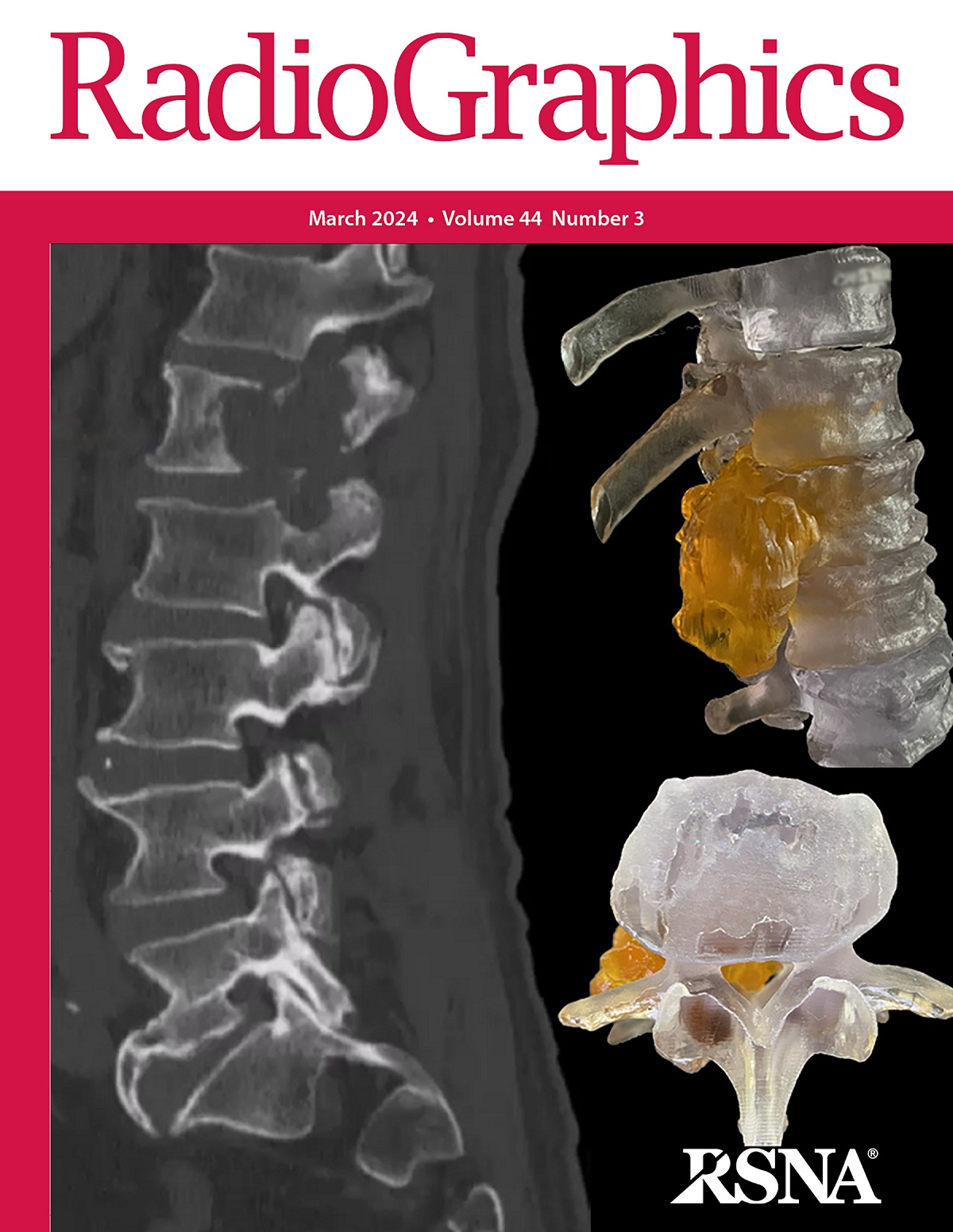求助PDF
{"title":"Central Role of CT in Management of Pulmonary Fibrosis.","authors":"Kum Ju Chae, Hye Jeon Hwang, Rosane Duarte Achcar, Joseph C Cooley, Stephen M Humphries, Seth Kligerman, David A Lynch","doi":"10.1148/rg.230165","DOIUrl":null,"url":null,"abstract":"<p><p>With the approval of antifibrotic medications to treat patients with idiopathic pulmonary fibrosis and progressive pulmonary fibrosis, radiologists have an integral role in diagnosing these entities and guiding treatment decisions. CT features of early pulmonary fibrosis include irregular thickening of interlobular septa, pleura, and intralobular linear structures, with subsequent progression to reticular abnormality, traction bronchiectasis or bronchiolectasis, and honeycombing. CT patterns of fibrotic lung disease can often be reliably classified on the basis of the CT features and distribution of the condition. Accurate identification of usual interstitial pneumonia (UIP) or probable UIP patterns by radiologists can obviate the need for a tissue sample-based diagnosis. Other entities that can appear as a UIP pattern must be excluded in multidisciplinary discussion before a diagnosis of idiopathic pulmonary fibrosis is made. Although the imaging findings of nonspecific interstitial pneumonia and fibrotic hypersensitivity pneumonitis can overlap with those of a radiologic UIP pattern, these entities can often be distinguished by paying careful attention to the radiologic signs. Diagnostic challenges may include misdiagnosis of fibrotic lung disease due to pitfalls such as airspace enlargement with fibrosis, paraseptal emphysema, recurrent aspiration, and postinfectious fibrosis. The radiologist also plays an important role in identifying complications of pulmonary fibrosis-pulmonary hypertension, acute exacerbation, infection, and lung cancer in particular. In cases in which there is uncertainty regarding the clinical and radiologic diagnoses, surgical biopsy is recommended, and a multidisciplinary discussion among clinicians, radiologists, and pathologists can be used to address diagnosis and management strategies. This review is intended to help radiologists diagnose and manage pulmonary fibrosis more accurately, ultimately aiding in the clinical management of affected patients. <sup>©</sup>RSNA, 2024 Supplemental material is available for this article.</p>","PeriodicalId":54512,"journal":{"name":"Radiographics","volume":"44 6","pages":"e230165"},"PeriodicalIF":5.2000,"publicationDate":"2024-06-01","publicationTypes":"Journal Article","fieldsOfStudy":null,"isOpenAccess":false,"openAccessPdf":"","citationCount":"0","resultStr":null,"platform":"Semanticscholar","paperid":null,"PeriodicalName":"Radiographics","FirstCategoryId":"3","ListUrlMain":"https://doi.org/10.1148/rg.230165","RegionNum":1,"RegionCategory":"医学","ArticlePicture":[],"TitleCN":null,"AbstractTextCN":null,"PMCID":null,"EPubDate":"","PubModel":"","JCR":"Q1","JCRName":"RADIOLOGY, NUCLEAR MEDICINE & MEDICAL IMAGING","Score":null,"Total":0}
引用次数: 0
引用
批量引用
Abstract
With the approval of antifibrotic medications to treat patients with idiopathic pulmonary fibrosis and progressive pulmonary fibrosis, radiologists have an integral role in diagnosing these entities and guiding treatment decisions. CT features of early pulmonary fibrosis include irregular thickening of interlobular septa, pleura, and intralobular linear structures, with subsequent progression to reticular abnormality, traction bronchiectasis or bronchiolectasis, and honeycombing. CT patterns of fibrotic lung disease can often be reliably classified on the basis of the CT features and distribution of the condition. Accurate identification of usual interstitial pneumonia (UIP) or probable UIP patterns by radiologists can obviate the need for a tissue sample-based diagnosis. Other entities that can appear as a UIP pattern must be excluded in multidisciplinary discussion before a diagnosis of idiopathic pulmonary fibrosis is made. Although the imaging findings of nonspecific interstitial pneumonia and fibrotic hypersensitivity pneumonitis can overlap with those of a radiologic UIP pattern, these entities can often be distinguished by paying careful attention to the radiologic signs. Diagnostic challenges may include misdiagnosis of fibrotic lung disease due to pitfalls such as airspace enlargement with fibrosis, paraseptal emphysema, recurrent aspiration, and postinfectious fibrosis. The radiologist also plays an important role in identifying complications of pulmonary fibrosis-pulmonary hypertension, acute exacerbation, infection, and lung cancer in particular. In cases in which there is uncertainty regarding the clinical and radiologic diagnoses, surgical biopsy is recommended, and a multidisciplinary discussion among clinicians, radiologists, and pathologists can be used to address diagnosis and management strategies. This review is intended to help radiologists diagnose and manage pulmonary fibrosis more accurately, ultimately aiding in the clinical management of affected patients. © RSNA, 2024 Supplemental material is available for this article.


